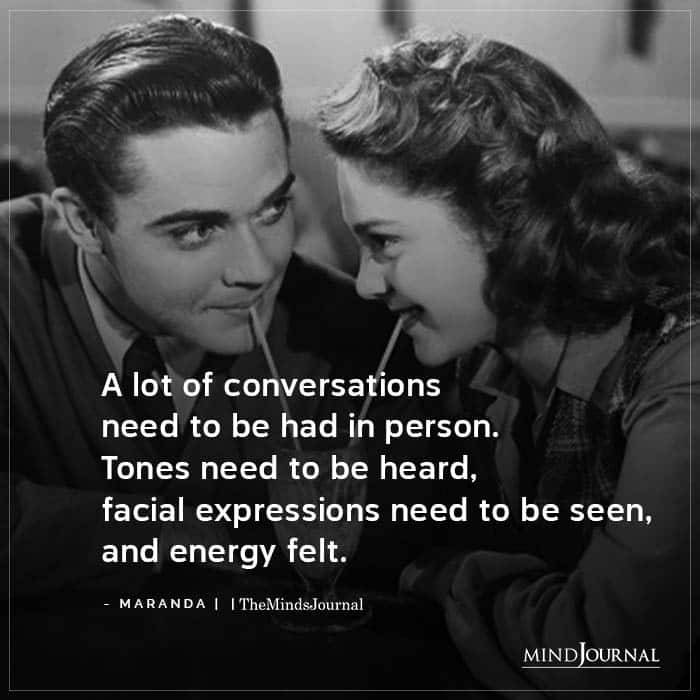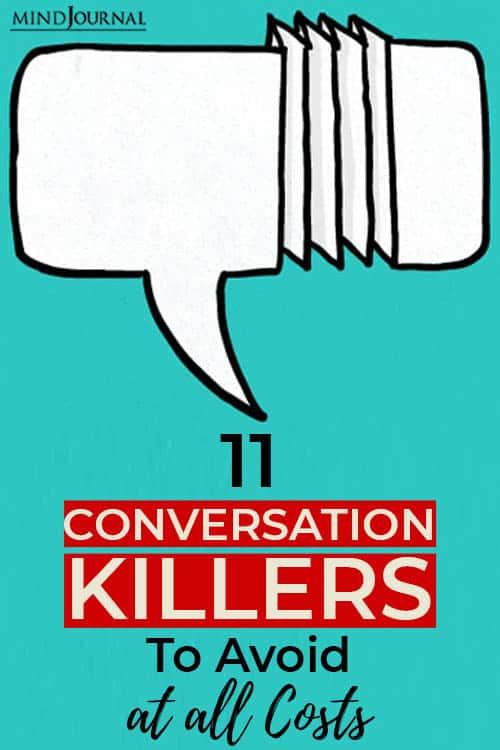How to be more mindful of your communications? Check to see if you are guilty of using some of these “conversation killers” or “blockers”:
“The problem with communication is the illusion that it has been accomplished.” —George Bernard Shaw
We are constantly told that communication is essential and there’s no such thing as over-communicating. We see communication as a standard price-of-entry. Almost every job description has it as a required skill. However, most of us experience at least one miscommunication every day.
What’s going on?
First, we vastly overestimate the importance of our words to the neglect of our non-verbals. As a famous quote from Stanford University goes, “You cannot not communicate.” That is, even if you are saying nothing, you are saying something. In fact, 93 per cent of communication is actually about body language, tone, and emphasis rather than the content or words being spoken.1
Read 15 Body Language Secrets of Successful People
Be mindful of your body language and tone and whether it matches the message.
This is easier said than done. One, it requires you to be in the moment—not just mentally but physically. It also requires you to be aware of what you are truly feeling about the moment.
Sometimes your nonverbals betray you. For instance, perhaps you want to help solve a problem between two colleagues, but you are unintentionally lean towards the colleague you like or believe more.
Being mindful of your body language is especially important if you are working across a dispersed workforce with English not being people’s first language.
Individuals less comfortable with English are going to be looking for clues in your body language and tone even more.
Read 10 Steps for Having a Difficult Conversation
And to add further complications to this, gestures may mean different things in different cultures. Watch for clues in the other person’s body language to see if your message is being delivered as you intended and verbally clarify your intent.

Being mindful about your non-verbal sometimes will require you explicitly communicate about why there is a disconnect between your body language and your message. For instance, you may need to say, “I am interested in what you have to say—I’m just a bit cold, so I need to cross my arms.” It may seem tedious, but the small gesture can keep rapport and conversation open.
Given that we live in a technological age of phone calls, emails, and social media, many times we don’t get to see or hear the body language or tone of the message. So let’s also talk about the remaining 7 percent (actual content) and understand what we are saying.
Recognize how you are framing your language: 11 Conversation Killers/Blockers to avoid

Being more mindful of the specific words you are using is important. This is tricky in stressful situations like tight deadlines or when mistakes have been made.
Check to see if you are guilty of using some of these “conversation killers” or “blockers”:
1. Trying to prove that you are right:
“Let me tell you what happened/the facts,” or “You are wrong.”
2. Telling the person what they “ought” or “should” do:
“You should have done it this way.”
3. Threatening the person with “or else’s” or “if you don’ts”
“Fix this now or else.”
4. Negating their own experience
“Most people don’t react like this,” or “You aren’t thinking straight.”
5. Not staying focused on the actual issue or bringing up things from the past
“This is just like the project two years ago,” or “And you also were late last week.”
6. Labeling the person rather than the behavior
“You are sloppy,” or “This shows how inconsiderate you are.”
7. Diminishing any positives with “but”
“You have so much potential, but…” or “You are an intelligent person, but…”
8. Interrogating
“Why did you do this?!”
9. Jumping to assumptions
“Clearly you have an issue with them,” or “You have a problem with any routine.”
10. Minimizing
“If you think that’s bad…” or “That’s nothing, what I had to do was…”
11. Dismissing your part in the problem/solution
“You are smart—you will figure this out,” or “Your job is to have this figured out.”
Reframe to a more open style.
Practising appropriate language in less stressful times will help develop the habit. Instead of using the conversation killers listed above, try these approaches instead:
1. Discuss your contributions to the issue
“I recognize that I didn’t ask you earlier how things were coming along.”
2. Clarify what result/goal you were expecting
“I was expecting this to have been completed yesterday.”
3. Express the consequences to the team or the level of urgency to justify any non-negotiables
“If this is delayed, we will miss our launch date.”
4. Recognize that your perspective is subjective and ask them to discuss their experience
“From my perspective, the message didn’t seem to land. What was your take?”
5. Ask for their process/story
“Can you outline the steps you took?”
6. Apologize or recognize out loud when you sidetrack or get emotional.
This helps demonstrate vulnerability and commitment to remain open
“I’m sorry, I was frustrated and brought up old issues that don’t matter to this project, please continue.”
7. Don’t soften the blow with disingenuous compliments.
If there are genuine positives, discuss those and talk about how those can be leveraged to overcome gaps
“Although the project was late, the final version was impeccable. Let’s make it a template so we can accelerate the process next time.”
8. Move from victim language to owner language
Instead of “You made me pissed off,” say “I felt frustrated when…”
9. Ask more questions and then test assumptions
“So, what I am hearing is that…”
Remember that any discussion should be given ample time; allotting too much time is better than trying to rush to resolution. It also helps prevent “emotional dumping” where you try to get everything you experienced out quickly without allowing time for each other to explore or react.
Read The Art of Conversation: 25 Great Conversation Starters
Finally, it’s important to remember that we tend to know and judge ourselves by our intentions, but we assume and judge others by their impact (our interpretation of their actions).
Thus, we need to remember that even when we have good intentions, we can have a negative impact—and just because you were negatively impacted, doesn’t mean the person had negative intentions. Be kind, give people the benefit of the doubt, and find solutions together.
References
Mehrabian, 1971
Written by: Lauren Florko, Ph.D For more information contact Lauren Florko at http://www.triplethreatconsulting.ca/ Originally appeared on Psychology Today Republished with permission.




Leave a Reply